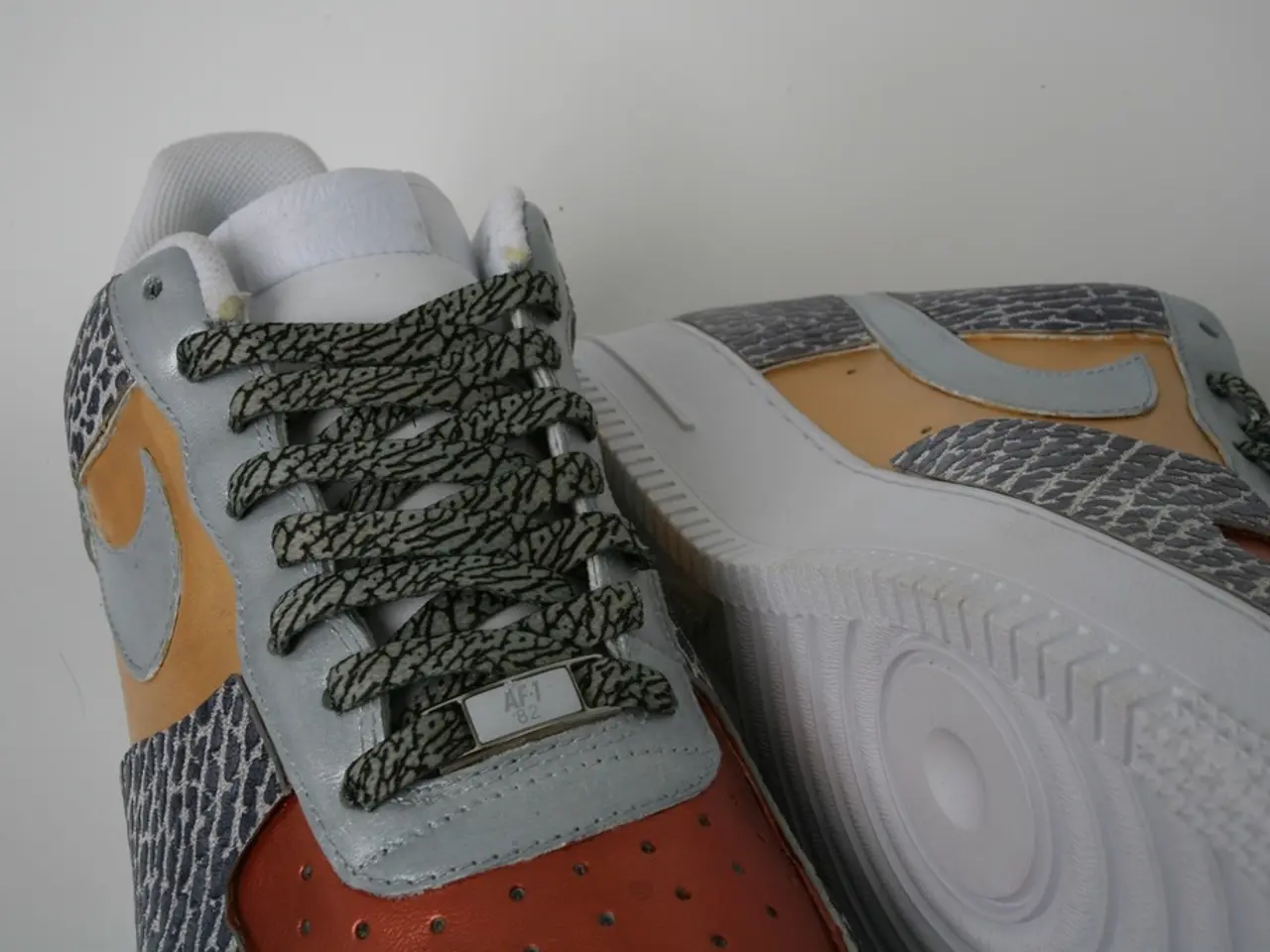Debatable triumph of athletic footwear: a balance of style, athleticism, and wellness?
In the realm of footwear, sneakers have long been synonymous with comfort, casualness, and lifestyle. However, when it comes to back health, the choice of sneakers becomes crucial.
Conscious gait training can have healing power in rehabilitation, and the right pair of sneakers can significantly contribute to this process. A key factor in selecting back-friendly sneakers is proper arch and heel support, which maintains spinal alignment and reduces strain on the lower back.
Cushioning and shock absorption are equally important, as they minimize impact forces transmitted to the spine when walking or standing. A stable and supportive sole construction prevents imbalances or excessive foot movements, contributing to good posture and alleviating back discomfort.
Other essential features include a wide toe box and ergonomic foot-shaped design, removable orthotic insoles, and breathability and temperature regulation. These elements work together to ensure overall comfort, alignment, and prevention of foot issues that could impact back health over time.
It's worth noting that the need for these features depends on the structure and function of the foot. Excessive cushioning can lead to foot misalignments and potentially cause back pain.
The Aktion Gesunder Rücken (AGR) e. V., a German organisation dedicated to promoting back health, awards the AGR quality seal to ergonomic products, including shoes for all age groups and areas of life. More information and images about back-healthy shoes, as well as interviews with recognised experts, are available upon request.
The AGR website also lists certified expert shops and provides tips on what to look for when selecting back-healthy shoes. Alternating between different, well-fitting and ergonomically designed shoes, and occasional barefoot walking, can help train the foot muscles.
Brands and models recommended by podiatrists often incorporate many of these features for optimal back health support. Sneakers that combine style, current trends, and ergonomics are available on the market.
Regular running in the right sneakers can strengthen spinal muscles, reduce stress, and promote the release of myokines, which have numerous health-promoting effects throughout the body. However, unnatural running in poor shoes can lead to tension and back problems.
Lastly, it's essential to remember that individual fit plays a crucial role in maintaining the functions of the foot, such as toe grip and rolling, and affects the entire body posture through the kinetic chain. Improperly fitting sneakers can lead to discomfort and back pain over time.
In conclusion, choosing sneakers with proper arch and heel support, cushioning, a stable sole, wide toe box, removable insoles, breathability, and a good fit is key to maintaining good posture, reducing muscular fatigue, and preventing exacerbation of existing back conditions.
- In the realm of footwear, proper arch and heel support in sneakers can significantly contribute to conscious gait training, a process crucial for back health rehabilitation.
- A stable and supportive sole construction in sneakers, along with cushioning and shock absorption, can help maintain good posture and alleviate back discomfort by preventing imbalances and reducing strain on the lower back.
- Brands and models recommended by podiatrists often incorporate features like a wide toe box, ergonomic foot-shaped design, and breathability for sneakers that combine style, current trends, and optimal ergonomics, promoting health-and-wellness by supporting back health.




